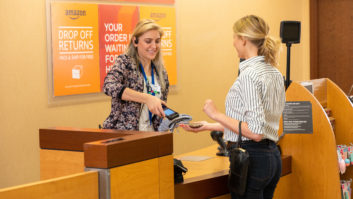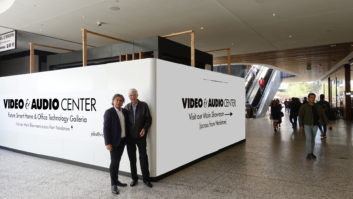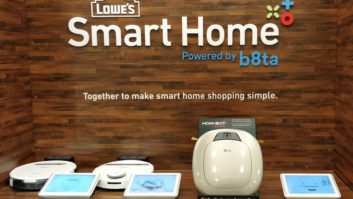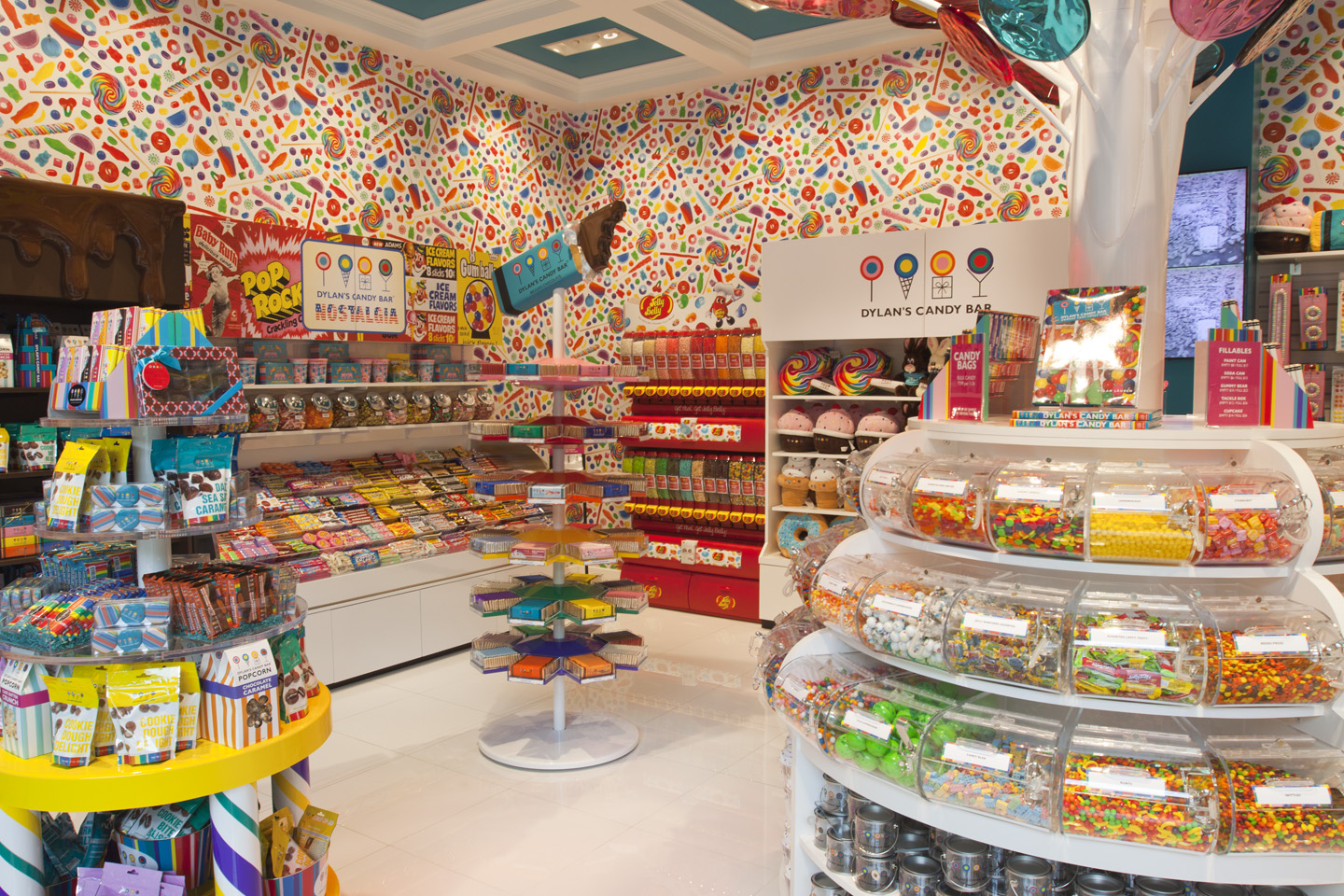
As consumer tech retailers seek new ways to bring traffic to stores and fend off showrooming, they are increasingly thinking outside the (big) box and hoping one of the special experiences they deliver will resonate with consumers.
While Apple may be among the best-known instances of physical CE retail done well, the rest of the industry is peppered with other examples. Perhaps among the more unconventional efforts, Abt Electronics, the Glenview, Ill.-based independent retailer, last year opened inside its store a licensed Dylan’s Candy Bar sweet and gift shop.
Co-President Jon Abt, whose grandparents founded the shop in the 1930s before it expanded to a 450,000 square-foot emporium including a warehouse, is the first to tell you that Abt doesn’t expect to make money from the candy shop.
“We want to entertain kids while their parents shop,” he told TWICE, adding the store also boasts other kids-friendly attractions, including what he said is Illinois’s largest private aquarium. “People want to have a good experience when they are out shopping because they are buying stuff online and don’t go shopping anymore. … We need to give people a real reason to shop and come in.”
Abt is also hosting its first Xbox One NBA 2K gaming tournament this month, following other successful eSports events inside its store. In the “Inspiration Studio” it built two years ago to showcase kitchen appliances in full-sized setups, Abt regularly hosts cooking demonstrations and competitions.
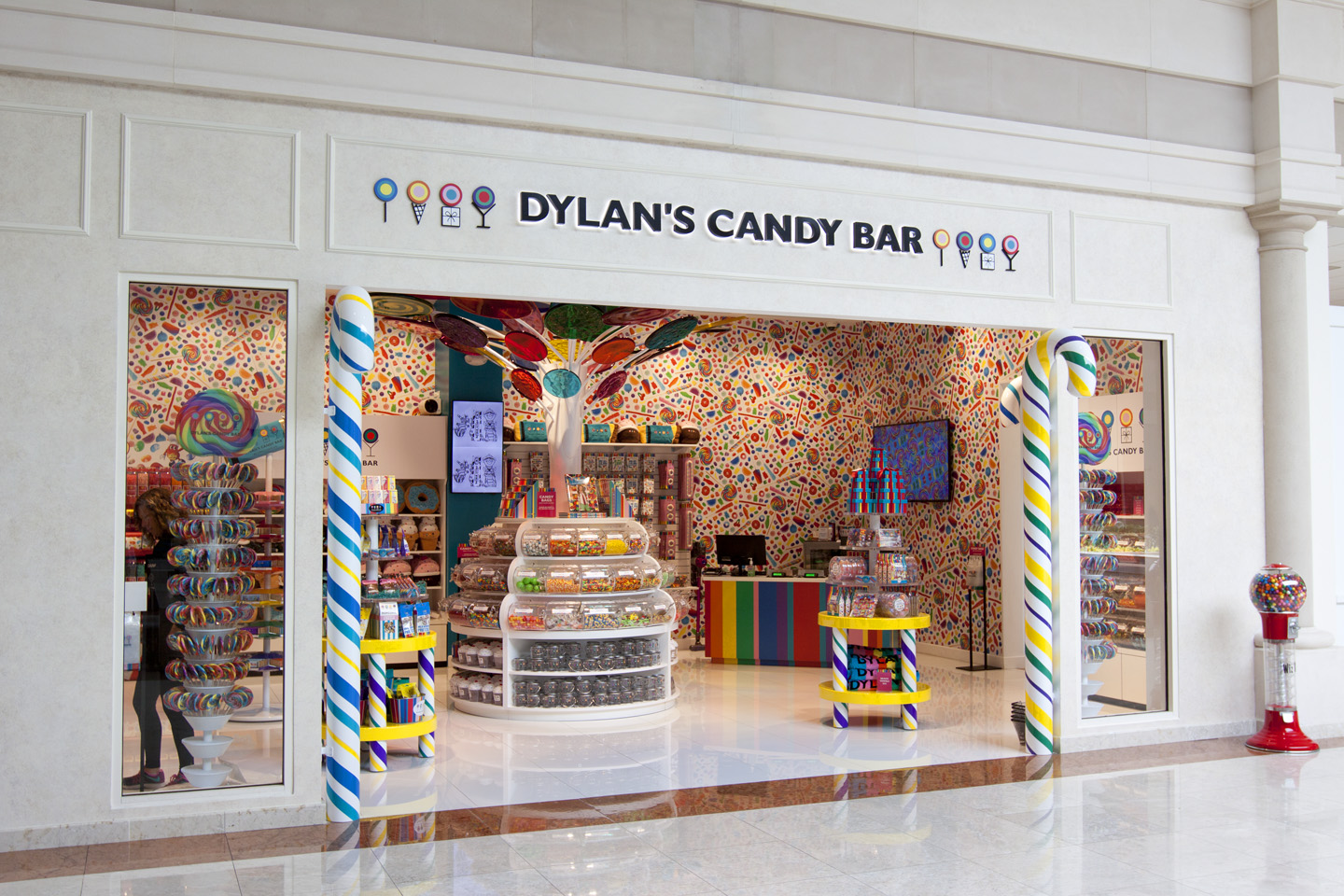
In its Microsoft Gaming room, customers can play not only Xbox games but also arcade games, and next month it will open “The Cave” featuring home-entertainment items, including ping pong and billiards tables that customers are also free to go in and play.
Related: How To Get People To Spend More At Retail
“You have to create experience,” Abt said, adding that extends beyond in-store experience to “bending over backward” when it comes to things like repair or installation service. “We work out of our gut. I’m sure many wouldn’t do what we are doing in terms of cost. [But] at the end of day, it’s really paid off for us. We have a very loyal customer base. … We aren’t just interested in the sale itself. We are looking at the long-term value of a customer.”
Abt’s sales have risen 10 percent each year and its foot traffic and profit are also up, he said, declining to be more specific. “We are doing very well,” he said.
See also: Amazon Opens 4-Star Store In New York
Best Buy, the No. 1 CE seller in 2017, has doubled down on hiring more “specialty labor” who can better assist customers to build what CEO Hubert Joly has described as a “stickier” relationship.
As part of this, Best Buy recently introduced the $200 Total Tech Support annual membership to offer tech help regardless of where and when consumers made their purchase. In another unconventional play, Best Buy in August agreed to buy Jitterbug parent Great Call to capitalize on the growing demand for senior-care products and services.
In the carrier channel, meanwhile, AT&T intends to open more pop-up locations inside apartment and condo buildings this year, as well as expand its mobile truck shops to more than 150 vehicles.
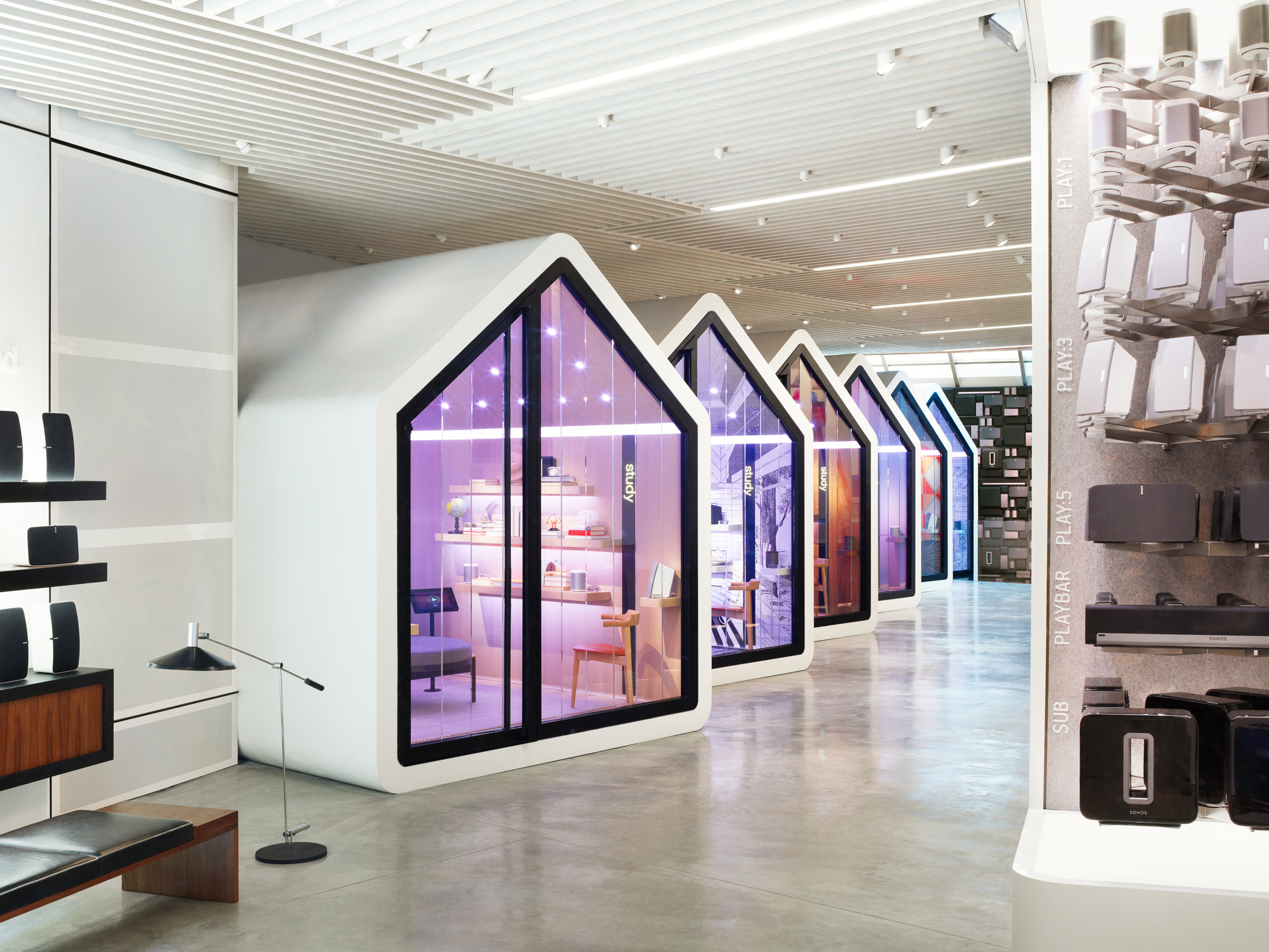
“Brick-and-mortar retail for technology has never been healthier and is the poster child for other retail segments in how to compete with online,” said Stephen Baker, VP and industry advisor at The NPD Group. “Best Buy has led the pack but many CE regional retailers and premium integrators and installers have managed to continue to drive business in stores. … The key to success has been experience: Creating a unique in-store experience that helps consumers navigate the complicated and challenging quicksand that can be consumer electronics.”
Lowe’s, which said more than $70 billion in annual home improvement plans are stalled because consumers can’t picture what their final projects would look like, in March unveiled its own “View In Your Space” augmented reality mobile app, joining rivals including Home Depot that also have their own AR apps. Lowe’s this year also tested having consumers use VR glasses against a virtual background inside some stores to try a hedge trimmer before any purchase.
See also: What Will AI Mean For Tech Retail?
The company said it’s “exploring” “how product trial through VR” affects buying decisions before deciding what to do with VR next.
At Sonos’ New York flagship in the SoHo neighborhood, several rooms, each with its own design flair, allow consumers to walk in and sit privately to hear how its different audio products would sound in their kitchens, bedrooms or living rooms.
Of course, brick-and-mortar’s reinvention comes after some hard lessons, and it remains a challenge for the industry to not only drive consumers to stores but also dissuade them from showrooming and making their final purchase online.
Consumer electronics, a category that’s seen one of the earlier and faster shifts to online purchases, now counts e-commerce for about “mid-30s” percentage of its market pie, NPD’s Baker said. NPD estimates that online’s share of the total CE market continues to increase about 1 percentage point each year.
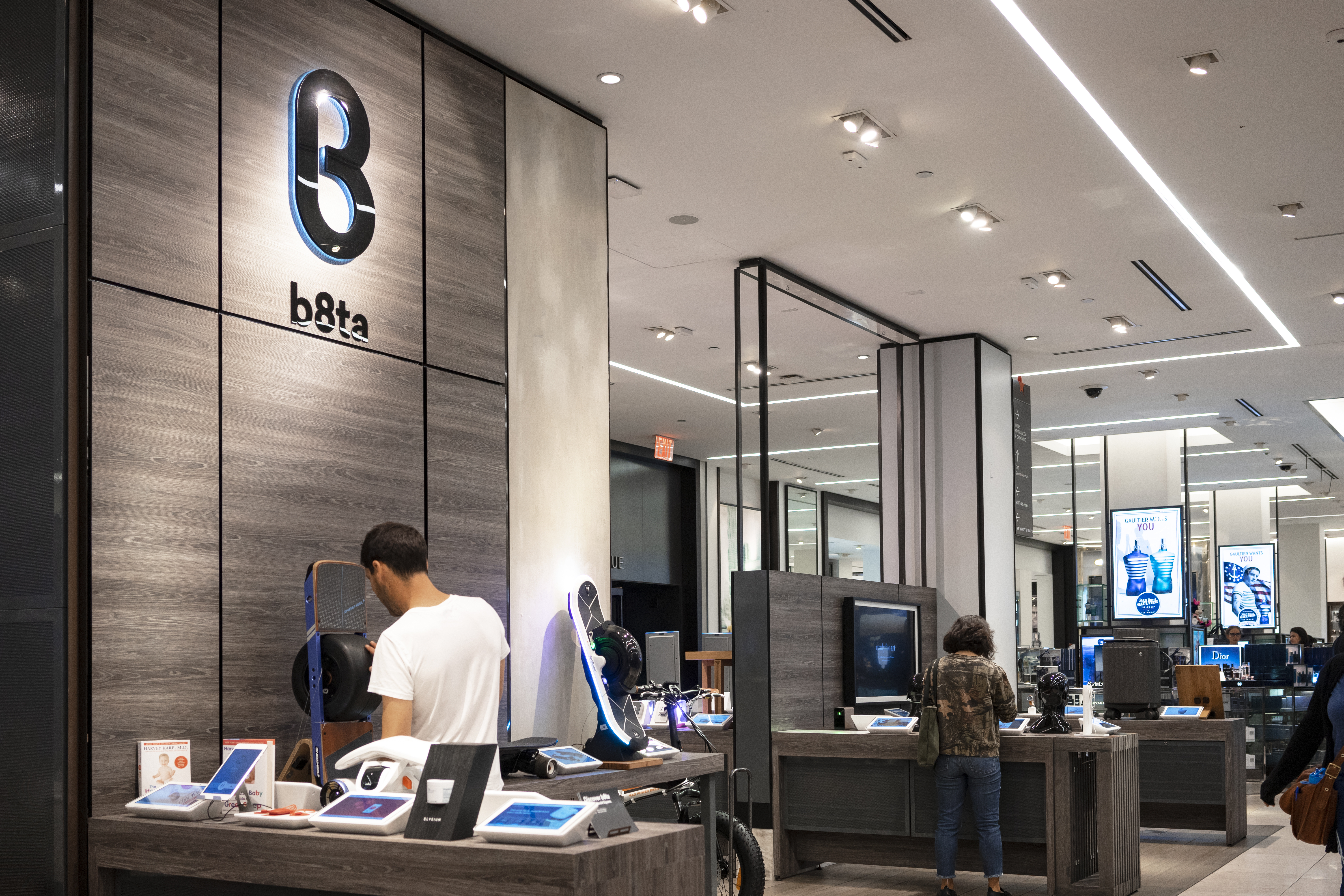
According to Euromonitor, aggregate U.S. sales of store-based electronics and appliance specialty retailers have declined 5.6 percent between 2012 and 2017 to $80.43 billion.
In another sharp contrast, the number of store-based consumer electronics units sold has declined 12 percent over the past five years to 314.2 million this year, while online sales of consumer electronics by units jumped 18 percent during the same time to 131.1 million, Euromonitor data shows.
See also: TWICE 2018 Top 100 CE Retailers Report: Call It A Comeback
The shift has affected both tech retailers and brands, allowing startups with new business models that marry the advantages of online and physical retail to thrive.
Three-year-old Silicon Valley start-up B8ta is one poster child representing a new direction of tech retail. At its stores, upstart labels and well-known major brands like Sony are on the same playing field when it comes to shelf space and displays. Devices including selfie-taking drones, electric scooters and electric skateboards are all out of boxes so consumers can try hands-on. Digital tablet displays are placed alongside each product to allow brands to change their pricing and marketing messages live remotely.
Its store employees, called testers, receive extensive product training to answer consumers’ questions. To keep customers coming back to discover something new, products are introduced monthly. Different from traditional wholesale labels, brands pay B8ta a flat fee and get all the sales themselves and can begin selling in just two weeks.
“Brands are looking for unique experience and being able to create hands-on experience with products,” said John Kennelly, B8ta’s head of partnerships. “We are providing real-time interaction. It’s retail as a service.”
See also: Life After Retail: Staples & Office Depot Search For Greener Pastures
In a sign that B8ta’s concept is gaining traction. Macy’s, after first reaching out to have B8ta build an in-store boutique inside its New York Herald Square flagship, has taken a stake in the startup and is using B8ta’s technology to open its “The Market” pop-up concept. B8ta also has helped Lowe’s roll out smart-home gadget sections inside some of its stores.
Meanwhile, B8ta’s platform has helped start-up brands like Meural digital art frame grow and get discovered. Meural used B8ta for its brick-and-mortar retail debut, according to B8ta, and it’s now carried at other physical retailers, including Lowe’s, Abt, Best Buy Canada and B&H Photo, according to Meural’s website.
“Now we get a lot of inbound interests,” B8ta’s Kennelly said.
Reflecting another growing trend of traditionally wholesale brands going direct to consumers, Netgear, using B8ta’s service, opened its first brick-and-mortar store in California in June. To deliver on experience, the store features a gaming lounge using Netgear’s Nighthawk Wi-Fi router.
“The vast majority of consumers are still discovering (products) in brick-and-mortar retailers,” Kennelly said. “Brands are looking for unique experiences. Everybody is looking to be thought of as innovative.”






